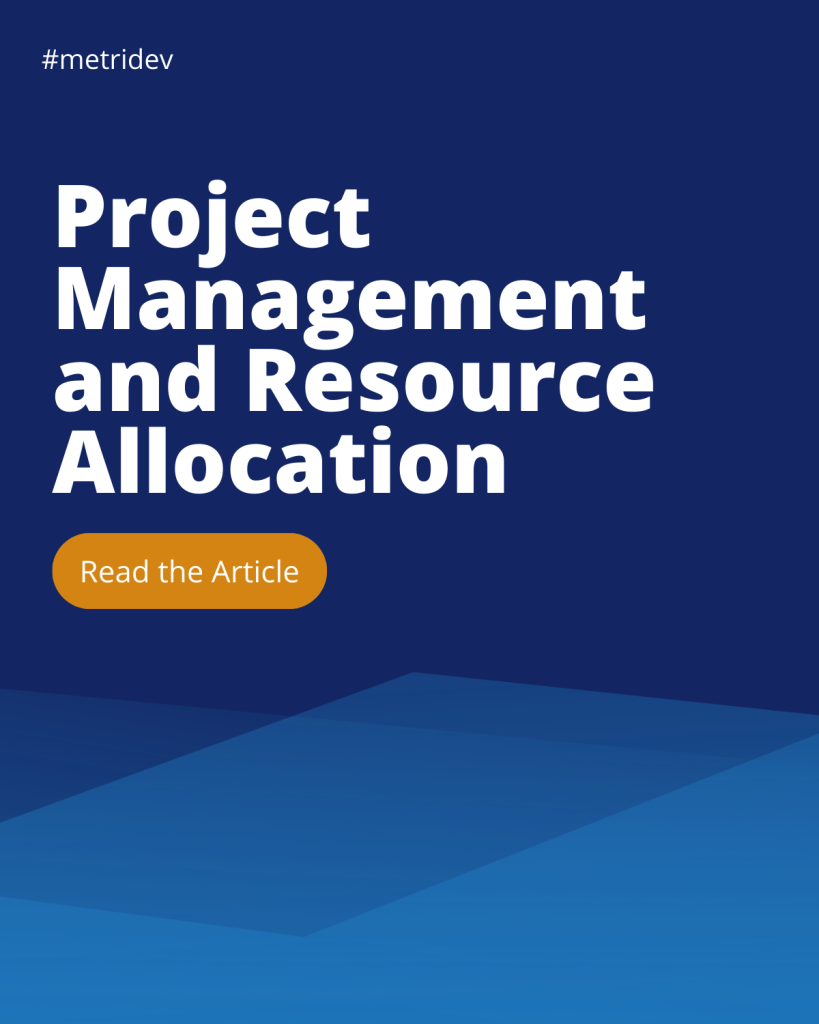Introduction
Resource planning and allocation are crucial aspects of any organization’s operations. It involves the strategic identification, acquisition, and distribution of resources to ensure their optimal utilization. Effective resource planning and allocation can significantly impact business success by maximizing efficiency, reducing costs, and improving productivity. This article explores the concept of resource planning and allocation, various methods and strategies involved, challenges faced, and best practices to implement.
What is Resource Planning and Allocation?
Resource planning and allocation refer to the process of identifying and determining the required resources for a project or organization, and then distributing them effectively to achieve desired outcomes. Resources can encompass tangible assets like machinery, equipment, and materials, as well as intangible resources such as human capital, skills, and knowledge.
How do you Plan and Allocate Resources?
Planning and allocating resources require a systematic approach that involves several key steps. The first step is to assess the project or organizational needs and objectives. This includes identifying the specific resources required and understanding their availability and constraints. Once the requirements are established, the next step is to analyze the available resources and their current utilization. This analysis helps in identifying any gaps or imbalances in resource allocation. Based on this assessment, a resource plan is developed, which outlines the allocation strategy, timelines, and responsibilities.
Importance of Resource Planning and Allocation
Effective resource planning and allocation play a pivotal role in achieving business objectives. It ensures that resources are utilized optimally by allocating them where they are most needed. This leads to increased productivity, reduced costs, and improved operational efficiency. Additionally, resource planning and allocation facilitate better decision- making by providing a clear overview of resource availability and utilization. It enables organizations to identify potential bottlenecks or areas of improvement, allowing them to take proactive measures to address them.
Different Methods of Resource Planning and Allocation
There are various methods and approaches to resource planning and allocation, depending on the nature of the organization and its projects. Some commonly used methods include:
- Top-down approach: In this method, the higher levels of the organization cascade resource planning and allocation decisions down to the lower levels. It provides a centralized control mechanism but may overlook the specific needs of individual projects or departments.
- Bottom-up approach: This approach involves soliciting input from various project teams or departments to determine their resource requirements. It allows for better alignment with specific project needs but can be time consuming and challenging to coordinate.
- Resource leveling: This method aims to optimize resource utilization by adjusting the project schedules and resource allocation to eliminate peaks and troughs. It helps in smoothing out resource demand and reducing potential bottlenecks.
- Critical path method: The critical path method focuses on identifying the most critical tasks in a project and allocating resources accordingly. It ensures that resources are allocated to tasks that have the highest impact on project completion.
Strategic Planning and Resource Allocation
Strategic planning is an essential component of resource planning and allocation. It involves aligning resource allocation decisions with the overall organizational strategy. This ensures that resources are allocated to projects or initiatives that are in line with the organization’s goals and objectives. Strategic planning helps prioritize resource allocation based on the project’s strategic importance, potential return on investment, and risk factors. It ensures that resources are allocated efficiently, maximizing the organization’s chances of success.

Key Elements of an Effective Resource Planning and Allocation Strategy
To develop an effective resource planning and allocation strategy, organizations need to consider several key elements:
1. Clear objectives: Clearly define the objectives and desired outcomes of the resource planning process to ensure alignment with organizational goals.
2. Accurate data: Gather accurate and up-to-date data on resource availability, utilization, and constraints. This data forms the foundation for effective allocation decisions.
3. Collaborative approach: Involve key stakeholders and departments in the resource planning process to ensure their input and buy-in. Collaboration helps in addressing potential conflicts or competing resource demands.
4. Flexibility: Build flexibility into the resource planning and allocation strategy to accommodate changing business needs, market dynamics, and unexpected events. This allows for agile resource allocation and adaptation.
5. Monitoring and optimization: Continuously monitor resource utilization, measure performance against objectives, and optimize resource allocation based on feedback and lessons learned.
Resource Planning and Allocation in Software
Resource planning and allocation are particularly crucial in the software development industry. Software projects often require a diverse range of resources, including skilled developers, testing environments, hardware infrastructure, and software licenses. Effective resource planning and allocation in software projects can help optimize development timelines, improve software quality, and reduce costs. It involves accurately estimating resource requirements, allocating resources based on project priorities, and monitoring resource utilization throughout the development lifecycle.
Challenges in Resource Planning and Allocation and How to Overcome Them
While planning and assigning resources can bring significant advantages, organizations often run into challenges when trying to make these strategies work effectively. One common hurdle is having limited resources available, whether it’s because of tight budgets, a shortage of skilled staff, or not having enough physical resources. To tackle this, organizations can consider other options like outsourcing or teaming up with external partners.
Another issue comes up when different projects or departments within an organization need resources that conflict with each other. To deal with this, clear communication, collaboration, and prioritizing tasks become crucial. Additionally, predicting resource needs accurately can be tough, especially in fast-paced business environments. Regularly keeping an eye on things and analyzing data can help organizations stay ahead of changing resource demands. Lastly, using resources inefficiently can lead to wasted time and money. Regularly reviewing and optimizing resource assignments can identify and rectify areas where resources are not reaching their full potential, thereby enhancing overall functional efficiency.
Action Plan to Acquire and Allocate Resources Incorporating Strategies
To create a comprehensive action plan for acquiring and allocating resources, organizations can navigate through several key steps.
Initially, it is crucial to clearly define the resource requirements for each project or department, taking into account specific objectives and constraints. Following this, an assessment of existing resource availability should be conducted to identify any gaps or imbalances in the current allocation, thus facilitating the prioritization of resource acquisition. Subsequently, various resource acquisition options, such as hiring, outsourcing, or collaborating with external partners, should be thoroughly evaluated. Important considerations in this assessment include factors like cost, expertise, and availability. Once these considerations are made, a detailed plan for resource allocation should be developed, incorporating factors like timelines, responsibilities, and potential risks. Lastly, a continuous monitoring process should be established to assess resource utilization, measure performance against objectives, and optimize resource allocation based on feedback and lessons learned. This systematic approach ensures a well-rounded and effective strategy for acquiring and allocating resources in organizations.
Best Practices
To enhance resource planning and allocation, organizations can adopt several best practices. First and foremost, it is essential to regularly review and update resource plans, ensuring they align with evolving business needs and available resources. Creating a culture of collaboration and open communication among stakeholders is equally crucial to making effective resource planning decisions. Leveraging technology and tools, such as resource planning and allocation software, can streamline the process, enhance accuracy, and facilitate data analysis. Another key practice is investing in training and development opportunities for employees to bolster their skills and capabilities, enabling them to make meaningful contributions to these process. These practices collectively contribute to optimizing the efficiency and effectiveness of resource management within an organization.
Resource Planning and Allocation Examples in Business
Resource planning and allocation strategies exhibit variability across diverse industries and organizations. A manufacturing company, for instance, focuses on guaranteeing the accessibility of raw materials, production equipment, and skilled labor to meet production targets. Similarly, in a software development firm, the emphasis is on assigning developers, testers, and infrastructure resources to various projects based on their priorities and deadlines. Meanwhile, within a healthcare organization, the process involves managing staff schedules, ensuring equipment availability, and coordinating patient appointments to ensure the efficient delivery of services.
Some Tools and Software
Several tools and software are available to assist organizations in resource planning and allocation. Some popular options include:
1. Metridev: Enables visualizing team member costs and project delivery status, and ensures that the team’s most vital resources are fully aligned with business priorities.
2. Jira: Primarily used for software development projects, Jira offers resource planning and allocation features, along with task management and collaboration capabilities.
3. Trello: A versatile project management tool that enables resource planning and allocation, task tracking, and team collaboration.
Steps to Implement a Resource Planning and Allocation Strategy
Creating a successful plan for managing and assigning resources needs careful thought and action. Here are the steps to follow:
- Identify important people: Figure out who the key people are in the resource planning and allocation process, like project managers, department heads, and senior leaders.
- Set goals and limits: Clearly state what you want to achieve and the boundaries of your resource plan. Make sure it lines up with the overall goals of the organization.
- Collect and study data: Get accurate and current information on resource availability, use, and any limitations. Look at the data to find any gaps or imbalances.
- Make the plan: Using what you found in the data, make a detailed plan for how to assign resources. Include details like when things should happen, who is responsible, and potential problems.
- Share and put into action: Tell the important people about the resource plan and start using it in the organization. Make sure everyone understands and give any needed training and support.
- Watch and check: Keep an eye on how resources are used, see if things are going as planned, and check if the resource plan is working well. Make changes based on what you learn and get feedback.
Conclusion
Effective resource planning and allocation are vital for organizations to achieve their goals and maintain a competitive edge. By strategically identifying, acquiring, and distributing resources, businesses can optimize efficiency, reduce costs, and improve productivity. A well-executed resource planning and allocation strategy enables organizations to make informed decisions, address resource constraints, and maximize resource utilization. By following best practices, leveraging technology, and continuously monitoring and optimizing resource allocation, organizations can enhance their chances of success and achieve sustainable growth. Implementing an effective resource planning and allocation strategy is a critical step towards achieving business success.
Read our article about SAFe Team Velocity and gain valuable insights for your projects development.
Also you can share this content on your social media and spread the knowledge😉
IT METRICS TO BECOME AN EXPERT















Leave a Reply